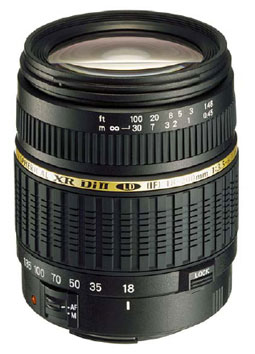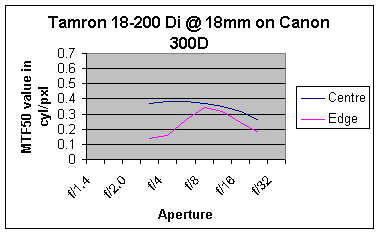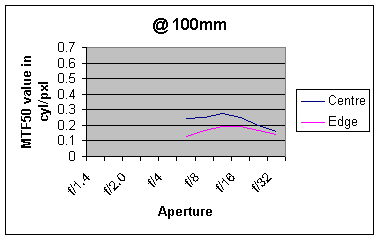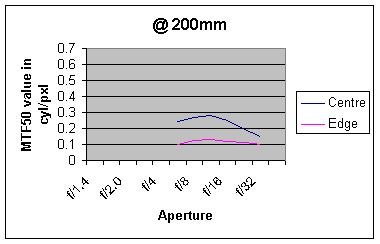Tamron Di II AF 18-200mm f/3.5-6.3 XR LD Aspherical (IF) Macro
 With the advent of cropped sensors on dSLR (digital single lens reflex) cameras, the need for different focal length lenses has emerged, especially at the wide end.
With the advent of cropped sensors on dSLR (digital single lens reflex) cameras, the need for different focal length lenses has emerged, especially at the wide end.
Traditionally, the budget offerings of 28-300mm lenses have been the magic ‘one lens does all’ answer. But 28mm on an APS-C sized sensor is not considered wide enough, more like a standard length. So in steps the 18-200mm which on a 1.6x crop camera equates to 28.8-320mm in 35mm full frame terms.
Here we look at Tamron’s version of this ‘new kid on the block’.
Specification
• Focal length 18-200mm
• Aperture f/3.5-6.3
• Angle of view
• Filter size / type 62mm
• Construction Elements/groups 15 elements in 13 groups
• Focusing type Internal
• Closest focus 0.45m
• Weight 0.398kg
• Dimensions (Dia x length) 73.8x84mm
• Mounts available Canon, Nikon, Pentax, Minolta
• Tripod bush No
• Price £324.99
Build and handling
This lens comes in at the top end of the budget bracket, so it is not surprising that it comes packed in a simple box with no case, just the lens and mount caps along with a bayonet type petal hood. Also included are a reasonably well-explained instruction leaflet and a one-year International warranty.
The lens is light and compact, especially as it has a zoom factor slightly in excess of 11x! Zooming increases the physical length of the lens by an extra 65mm at the 200mm end, but the front element, thanks to the internal focus mechanism, remains in the same orientation. Helpful if you use filters.
The extension is achieved with two telescopic sleeves, coming out of the barrel like a couple of those Russian dolls. These are locked in the closed (18mm) position by a zoom lock, which, on the new lens, seemed rather redundant as the mechanism seemed a little stiff. It is mounted on the zoom ring, which is twice the width of the focusing ring, has a ribbed rubber finish and also carries markings at 18, 35, 50, 70, 100,135 and 200mm. The much narrower focus ring carries distance scales in both metres and feet. This ring rotates during autofocusing, which is a pain!
The autofocus was also fairly sedentary in it’s operation, with a mild grinding noise accompanying it. Switch to manual focus (there is a switch on the left side of the lens, near the mount, for Canon) and the ring becomes loose. The entire focus range is achieved with a movement of less than 40mm. The combination made manual focus very easy and workable with one finger.
Optical Quality
To achieve a zoom ratio of over 11x, along with keeping the lens light and compact does require some compromises and this is the area where they show. For printing out to 7x5 or for web use, the optical quality of this lens is adequate. If you are looking to produce larger prints, I would be tempted to opt for other lenses that have less of a focal range, and therefore, not so much of a compromise.
Resolution was reasonable at the wider end of the range, falling off as the focal length increased. Distortion, although not as big a problem in the digital age, was quite barrelled at the wide end moving through neutral to a definite pincushion at the long end.
Colour rendition is an area where I could not find much to complain about but Chromatic Aberrations were present throughout and, unfortunately, quite pronounced in high contrast areas!
 |  |
 |  |
Click on each of the comparison photos below to view full size versions
 |  |
 |  |
Below is our lens test data. To find out how to use this graph look at this article: How we test lenses



Verdict
The focal length range of this lens is ideal as a walkabout lens and it’s lightness and ease of use are commendable for that purpose. Add to that the advantage of not having to change lenses very often and the idea has a lot going for it especially if you are travelling/holidaying and need to keep things light. However, don’t be disappointed if you cannot produce stunning results at A3 because this lens will not make it.
In summary the main positive points of the Tamron Di II AF 18-200mm f/3.5-.3 XR LD Aspherical (IF) Macro are:
![]() Size and weight
Size and weight
![]() Focal Range
Focal Range
![]() Easy manual focus
Easy manual focus
Negative points are:
![]() Optical quality
Optical quality
![]() Slow/noisy autofocus
Slow/noisy autofocus
Check the latest price of the Tamron Di II AF 18-200mm f/3.5-.3 XR LD Aspherical (IF) Macro here
Test by Ian Andrews www.wildaboutkent.co.uk
Add your message
Please login here or if you've not registered, you can register here. Registering is safe, quick and free.
photodo Stats
428 MTF tests
74 in-depth photodo reviews
100+ users join each day
Help the lens community by reviewing or rating a lens today via our lens search
Latest Lens Reviews
- Chinon 28mm f/2.8 Vintage Lens Review
- Canon EF 70-200mm f/4L IS II USM Lens Review
- Samyang AF 85mm f/1.4 EF Review
- Sigma 70mm f/2.8 DG Macro Art Review
- Samyang AF 24mm f/2.8 FE Review
- Meike 50mm f/1.7 Review
- Tamron 70-210mm f/4 Di VC USD Review
- Lensbaby Burnside 35mm f/2.8 Review
- Asahi Super Takumar 50mm f/1.4 Review
- Asahi Super-Multi-Coated Takumar 135mm f/3.5 Review
